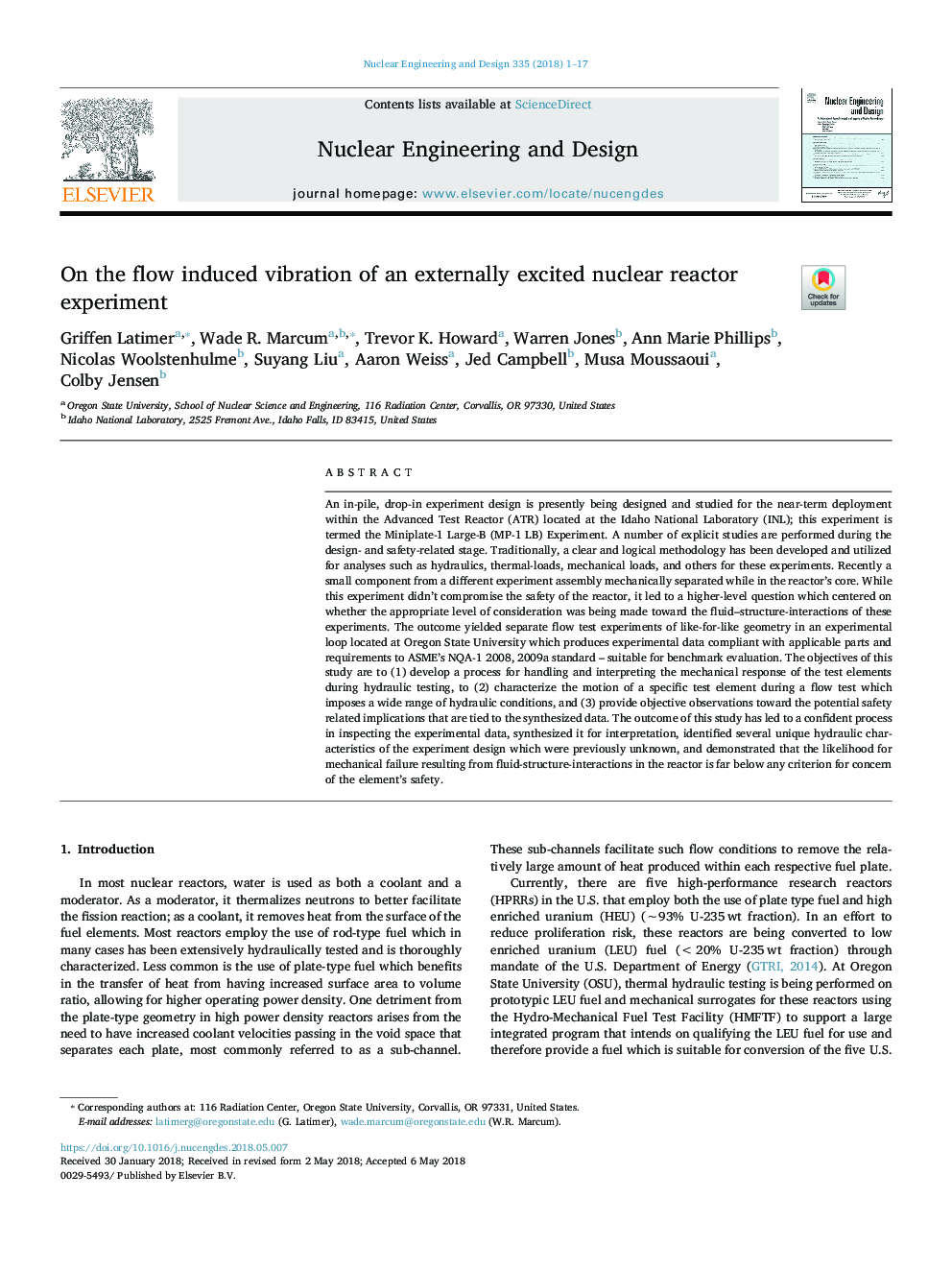| Article ID | Journal | Published Year | Pages | File Type |
|---|---|---|---|---|
| 6758699 | Nuclear Engineering and Design | 2018 | 17 Pages |
Abstract
An in-pile, drop-in experiment design is presently being designed and studied for the near-term deployment within the Advanced Test Reactor (ATR) located at the Idaho National Laboratory (INL); this experiment is termed the Miniplate-1 Large-B (MP-1 LB) Experiment. A number of explicit studies are performed during the design- and safety-related stage. Traditionally, a clear and logical methodology has been developed and utilized for analyses such as hydraulics, thermal-loads, mechanical loads, and others for these experiments. Recently a small component from a different experiment assembly mechanically separated while in the reactor's core. While this experiment didn't compromise the safety of the reactor, it led to a higher-level question which centered on whether the appropriate level of consideration was being made toward the fluid-structure-interactions of these experiments. The outcome yielded separate flow test experiments of like-for-like geometry in an experimental loop located at Oregon State University which produces experimental data compliant with applicable parts and requirements to ASME's NQA-1 2008, 2009a standard - suitable for benchmark evaluation. The objectives of this study are to (1) develop a process for handling and interpreting the mechanical response of the test elements during hydraulic testing, to (2) characterize the motion of a specific test element during a flow test which imposes a wide range of hydraulic conditions, and (3) provide objective observations toward the potential safety related implications that are tied to the synthesized data. The outcome of this study has led to a confident process in inspecting the experimental data, synthesized it for interpretation, identified several unique hydraulic characteristics of the experiment design which were previously unknown, and demonstrated that the likelihood for mechanical failure resulting from fluid-structure-interactions in the reactor is far below any criterion for concern of the element's safety.
Related Topics
Physical Sciences and Engineering
Energy
Energy Engineering and Power Technology
Authors
Griffen Latimer, Wade R. Marcum, Trevor K. Howard, Warren Jones, Ann Marie Phillips, Nicolas Woolstenhulme, Suyang Liu, Aaron Weiss, Jed Campbell, Musa Moussaoui, Colby Jensen,
